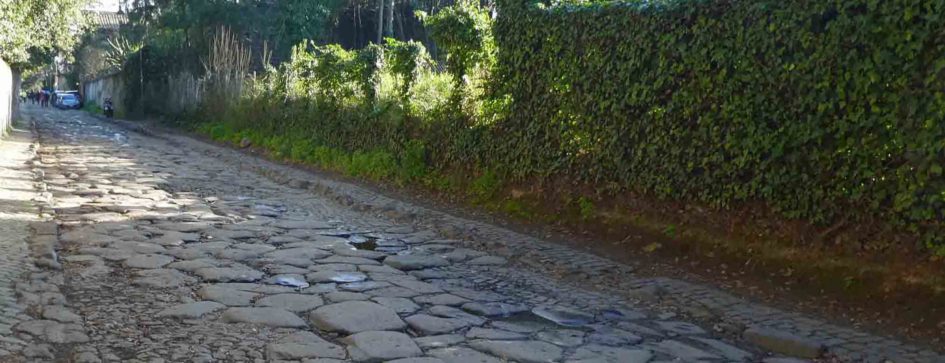The Romans were extraordinary road builders. Before the 4th century BC, many roads were poorly-maintained, meandering tracks connecting villages and towns. But Rome required a more efficient transportation network, a more effective means of deploying and supplying its armies, so Roman architects and engineers got to work.
They designed highways – long and straight – for the first time without regard for the type of terrain that would be encountered. And then they engineered bridges and tunnels so their roads could cross rivers and carve through mountains.
 And the roads were of robust construction. A base layer of gravel or rock was laid into a deep trench; this was then covered with a layer of finer gravel, before slabs of stone – often basalt – were laid on top (and cambered towards the edges to allow for water runoff).
And the roads were of robust construction. A base layer of gravel or rock was laid into a deep trench; this was then covered with a layer of finer gravel, before slabs of stone – often basalt – were laid on top (and cambered towards the edges to allow for water runoff).
The standard road width was 14 Roman feet (about 4.5 metres), enough to allow two carriages travelling in opposite directions to pass. Wide hard-packed earth footpaths, edged with stone, flanked the sides of the carriageway. Regular ‘post-stations’ along the way allowed travellers to rest and change the horses. And maintenance workers were assigned responsibility for particular sections of the road. In all, the Romans built 120,000 kilometres of highways.
The first of these, the Via Appia, was constructed – in exactly this way – in 312 BC. Hard to believe, isn’t it? Known as the ‘Queen of Roads’, the Via Appia stretched from Rome, 196 kilometres south to Capua. Much of the road still exists today, including sections with the original stones laid by the Romans 2300 years ago. Now’s that engineering that has stood the test of time.

03/25/2018 at 3:07 pm
Such skilled minds!
02/28/2018 at 8:27 pm
That’s incredible, and no potholes! 😀
02/24/2018 at 2:34 am
Thank You Gayle
Wonderful journeys on those roads.
Cheers Paul